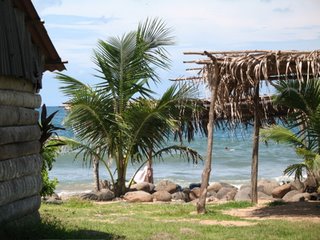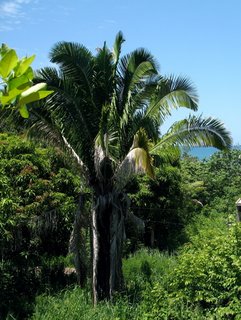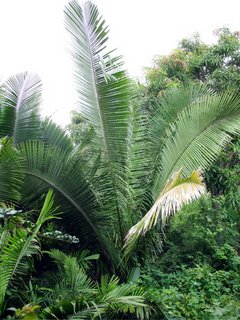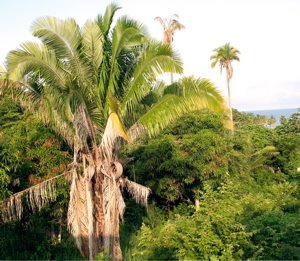
I was just looking at the Fairchild Botanical Center's "Tropical Gardening", trying to figure out how what kind of palm stands out in front of this house between the veranda and the ocean.
The book quotes David Fairchild, the American botantist and plant explorer for whom the Center is named, as saying that palms are "the greatest single glory of the tropics". However, he says, the naturalist "learns to have a reverence of them, and a love of them, which is perhaps in direct relationship to the difficulty he experiences in telling the difference species apart".

Which made me feel a little better about not being able to tell one from another. Usually palms grow near other similar palms, so mostly I can't look at two different palms right next to each other in order to see the differences. Which would simplify things. These photos are some of the palms around town.

But now, with this handy-dandy camera I can at least compare photos. But I am still having trouble. I think we may have at least three different palms here: Mexican Oil Palm (Attalea cohune), Coconut palms (Cocos nucifera), and Mexican Fan Palms (Washington robusta). Or I might be totally off base. I am going to start asking people what the different palms are called.

There are more than 200 genera of palm, and maybe 4,000 species, in the world, most of them tropical. In Chacala, palm fronts are used for roofs, walls, and dimensional lumber. The trunks for anything you can imagine. The wood is very dense and hard and difficult to work. The coconut meat is eaten, the liquid is used as a drink, the shells for cups and bowls and artistic projects. Everywhere you look you see bits and pieces of palms. My favorite use is to hang my hammock from one, and then relax in the shade of the palm from my hammock.

No comments:
Post a Comment